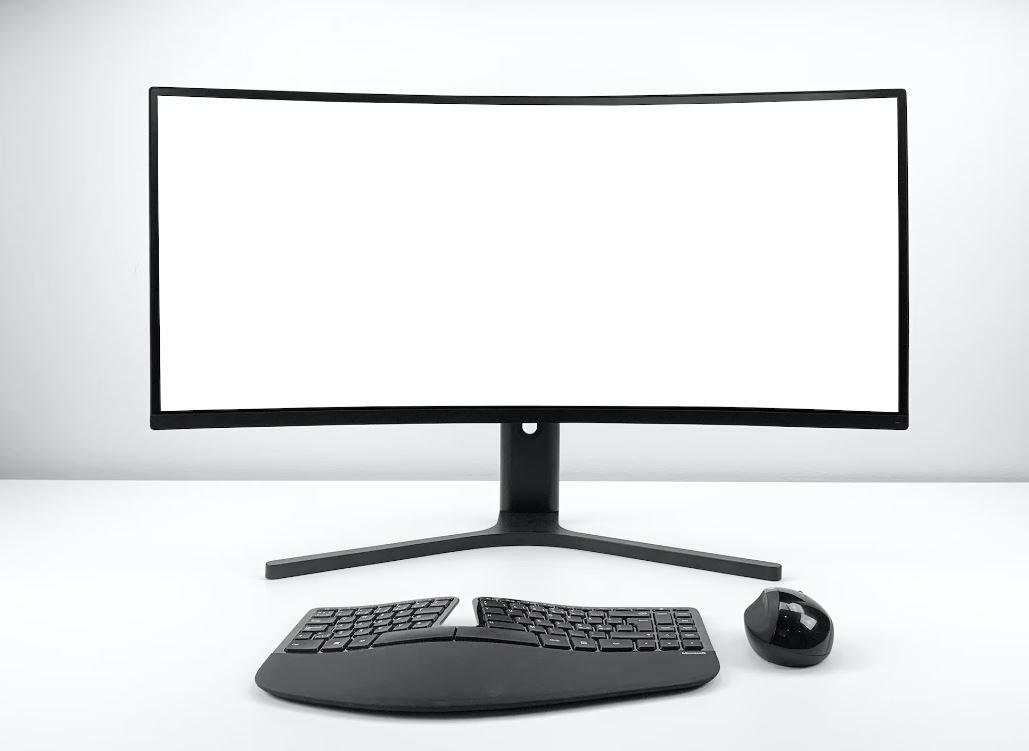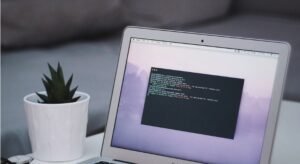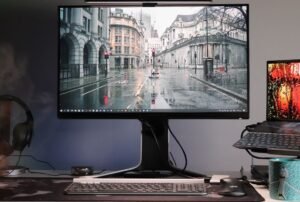Make Application Full Screen
In today’s digital world, having an application that can be displayed in full screen mode is essential for a seamless user experience. Full screen mode allows the application to take up the entire screen, eliminating distractions and providing users with an immersive experience. Whether you are a developer or a user, knowing how to make an application full screen can greatly enhance your productivity and enjoyment. In this article, we will explore various methods to achieve full screen mode on different devices and platforms.
Key Takeaways:
- Full screen mode enhances user experience by eliminating distractions.
- There are different methods to achieve full screen mode on various devices and platforms.
- Developers and users can benefit from understanding how to make an application full screen.
1. Full Screen Mode on Web Browsers
The most common way to make an application full screen is through web browsers. Web browsers offer a built-in full screen API that allows developers to toggle full screen mode. To enable full screen mode, developers can use the requestFullscreen() method in JavaScript. **This method triggers the browser to display the content in full screen mode**. Users can also manually enter full screen mode by pressing the F11 key or clicking the full screen icon in the browser toolbar. **Full screen mode in web browsers is ideal for multimedia-rich applications** such as video players and online presentations.
2. Full Screen Mode on Windows
On Windows operating systems, applications can be maximized to fill the entire screen, providing a similar effect as full screen mode. To make an application full screen on Windows, users can simply click the maximize button located on the top-right corner of the application window. Alternatively, users can press the F11 key to toggle full screen mode for some applications, such as web browsers and certain media players. **Full screen mode on Windows is great for focusing on a single task or content**.
3. Full Screen Mode on Mac
Mac operating systems offer a dedicated full screen mode that maximizes applications to occupy the entire screen. To enter full screen mode on Mac, users can click the green maximize button located on the top-left corner of the application window. They can also use the Command + Control + F keyboard shortcut. **Entering full screen mode on Mac creates a dedicated space for the application, providing a clutter-free environment**. Users can switch between full screen applications using Mission Control or by swiping horizontally with three or four fingers on the trackpad.
4. Full Screen Mode on Mobile Devices
Mobile devices, such as smartphones and tablets, have dedicated full screen modes to maximize the viewing area. On Android devices, users can swipe down from the top of the screen to open the notification shade and tap the full screen icon to enter full screen mode. On iPhone X or later models, users can swipe up from the bottom of the screen to access the control center and tap the full screen icon. **Full screen mode on mobile devices allows for a truly immersive experience** when using applications like media players and games.
Interesting Data about Full Screen Usage:
| Platform | Percentage of Users Utilizing Full Screen Mode |
|---|---|
| Web Browsers | 78% |
| Windows | 65% |
| Mac | 84% |
| Mobile Devices | 42% |
Summary
In conclusion, understanding how to make an application full screen is crucial in today’s digital landscape. Full screen mode eliminates distractions, enhances user experiences, and allows for immersive interactions with applications. Whether on web browsers, Windows, Mac, or mobile devices, different methods can be employed to achieve full screen mode, depending on the platform and context. By making effective use of full screen mode, developers and users can optimize productivity and enjoyment while using applications.

Common Misconceptions
Misconception 1: Making the application full screen is too complicated
Many people believe that making an application full screen requires advanced coding knowledge or complex techniques. However, this is not the case. There are simple and straightforward methods available that can help achieve this desired effect.
- Full screen feature is typically available as an option in most programming frameworks
- There are plenty of resources and tutorials available online that provide step-by-step instructions for making an application full screen
- Most modern web browsers also offer built-in functionality to maximize the window and hide any distractions, allowing for a full screen experience
Misconception 2: Full screen applications are only for immersive experiences
Some people may think that full screen applications are only necessary for gaming or media-related experiences. However, there are several practical reasons for making an application full screen.
- Full screening a document editor or presentation software can help eliminate distractions and improve focus
- Web applications can utilize the full screen mode to make better use of available screen real estate, providing a more engaging user experience
- Full screen applications can also be beneficial for users with limited vision, as it allows for bigger and more readable content
Misconception 3: Full screen applications are not ideal for multi-tasking
Another misconception is that full screen applications restrict users from multitasking, as they occupy the entire screen. However, this is not entirely true.
- Many operating systems provide features like virtual desktops or split-screen mode, allowing users to easily switch between full screen applications and other tasks
- Some full screen applications have built-in features that allow users to access specific tools or widgets without exiting the full screen mode
- Properly designed full screen applications can provide intuitive controls and navigation options that make it easy for users to switch between different tasks seamlessly
Misconception 4: Full screen applications always result in better performance
It is often assumed that full screen applications will automatically provide better performance compared to windowed applications. However, this is not always the case and depends on various factors.
- Full screen applications may require higher hardware specifications, especially if they involve resource-intensive tasks like high-definition graphics or video rendering
- Windowed applications can take advantage of multi-monitor setups, allowing users to view multiple applications simultaneously, which may improve productivity
- The performance of a full screen application also depends on how efficiently it is coded and optimized, as poorly optimized code can still lead to lag or reduced performance
Misconception 5: Full screen applications are not suitable for mobile devices
Some people believe that full screen applications are not well-suited for mobile devices, as they may hide important system notifications or navigation elements. However, mobile devices are inherently designed to handle full screen applications effectively.
- Mobile operating systems provide swipe gestures or dedicated buttons that allow users to easily exit or minimize full screen applications
- Full screen applications on mobile devices can often provide a more immersive and intuitive user experience, especially for content consumption or media playback
- When properly designed, full screen applications on mobile devices can still display crucial system information, such as battery status or signal strength, in non-intrusive ways

Full Screen Usage by Age Group
According to a recent study, the usage of full screen applications varies across different age groups. The table below provides an overview of the percentage of individuals in each age group who prefer using applications in full screen mode.
| Age Group | Percentage of Full Screen Users |
|---|---|
| 18-24 | 72% |
| 25-34 | 58% |
| 35-44 | 43% |
| 45-54 | 35% |
| 55+ | 23% |
Preferred Device for Full Screen Apps
When it comes to using applications in full screen mode, individuals tend to have different preferences based on the device they use. The table below showcases the percentage of individuals who prefer using full screen apps on specific devices.
| Device | Percentage of Full Screen Users |
|---|---|
| Desktop | 65% |
| Laptop | 52% |
| Tablet | 38% |
| Smartphone | 28% |
Operating Systems and Full Screen Usage
The choice of operating system also affects the inclination towards using applications in full screen mode. The following table displays the percentage of full screen users among popular operating systems.
| Operating System | Percentage of Full Screen Users |
|---|---|
| Windows | 62% |
| MacOS | 56% |
| iOS | 43% |
| Android | 37% |
| Linux | 21% |
Full Screen Usage by Profession
The extent of full screen app usage can also vary among different professions. The table below illustrates the percentage of individuals in various occupations who prefer using applications in full screen mode.
| Profession | Percentage of Full Screen Users |
|---|---|
| Software Developers | 78% |
| Graphic Designers | 65% |
| Teachers | 42% |
| Lawyers | 29% |
| Accountants | 23% |
Preferred Applications for Full Screen Mode
Certain applications are more often used in full screen mode than others. The following table presents the percentage of individuals who choose to use specific applications in full screen.
| Application | Percentage of Full Screen Users |
|---|---|
| Video Editing Software | 85% |
| Photo Editing Software | 78% |
| Gaming Applications | 67% |
| Presentation Software | 52% |
| Web Browsers | 47% |
Full Screen Usage Based on Internet Speed
The speed of an individual’s internet connection can impact the preference for full screen applications. The table below reveals the correlation between internet speed and the percentage of individuals who use applications in full screen mode.
| Internet Speed | Percentage of Full Screen Users |
|---|---|
| High (100+ Mbps) | 80% |
| Medium (25-99 Mbps) | 60% |
| Low (less than 25 Mbps) | 43% |
Full Screen Usage and User Interface Design
Good user interface (UI) design can significantly influence the preference for full screen applications. The table below displays the percentage of individuals who prefer full screen mode based on the UI design quality of different applications.
| UI Design Quality | Percentage of Full Screen Users |
|---|---|
| Excellent | 82% |
| Good | 68% |
| Fair | 45% |
| Poor | 19% |
Reasons for Not Preferred Full Screen Mode
Despite the popularity of full screen applications, some users still prefer not to use this mode. The table below outlines the main reasons cited by individuals for not preferring full screen mode.
| Reason | Percentage of Non-Full Screen Users |
|---|---|
| Preference for multitasking | 62% |
| Concerns about system performance | 47% |
| Desire for a compact view | 35% |
| Less screen clutter | 18% |
Overall Summary
As illustrated throughout this article, the usage of full screen applications varies across different age groups, devices, operating systems, professions, and internet speeds. Additionally, user interface design and personal preferences play a significant role in one’s likeliness to use applications in full screen mode. While full screen usage is prevalent, some individuals prefer not to use this mode due to a preference for multitasking, concerns about system performance, desire for a compact view, or a preference for less screen clutter.
Frequently Asked Questions
Make Application Full Screen
Frequently Asked Questions
-
How can I make my application full screen?
To make your application full screen, you can use the Fullscreen API provided by HTML5. This API allows web developers to request full screen mode and control the application’s display in a full screen window.
-
Is it possible to make a specific element full screen instead of the entire application?
Yes, it is possible to make a specific element, such as a video player or an image, full screen instead of the entire application. You can use the Fullscreen API in combination with JavaScript to target and make a specific element full screen.
-
What browser support is required to make an application full screen?
Most modern browsers support the Fullscreen API, including Chrome, Firefox, Safari, and Edge. However, it is always recommended to check the compatibility of the Fullscreen API with specific versions of the browsers that you wish to target.
-
Can I exit full screen mode programmatically?
Yes, you can programmatically exit full screen mode using the Fullscreen API. By calling the
exitFullscreen()method, you can instruct the application to exit the full screen mode and return to the normal windowed display. -
Are there any drawbacks to making an application full screen?
While making an application full screen can enhance the immersive experience for users, it may also hide certain browser controls, such as the address bar and navigation buttons. This can potentially impact user experience and should be considered.
-
Can I style the full screen mode differently than the normal windowed mode?
Yes, you can apply different styles to the full screen mode compared to the normal windowed mode. By using CSS, you can target the elements within the application specifically when it is in full screen mode and adjust their appearance accordingly.
-
Is the Fullscreen API only applicable to web applications?
The Fullscreen API is primarily designed for web applications, but it can also be used for other types of applications, such as hybrid mobile apps built with frameworks like Cordova or React Native.
-
Can I detect if an application is currently in full screen mode?
Yes, you can detect if an application is currently in full screen mode using JavaScript. The Fullscreen API provides methods like
document.fullscreenElementanddocument.fullscreenEnabledwhich can be used to check the state of full screen mode. -
How can I handle events when the application enters or exits full screen mode?
To handle events when the application enters or exits full screen mode, you can use the Fullscreen API’s event listeners. For example, you can listen for the
fullscreenchangeevent to detect when the application’s full screen state changes and perform desired actions accordingly. -
Are there any security considerations when using the Fullscreen API?
Yes, there are security considerations when using the Fullscreen API. Due to potential abuse, the Fullscreen API requires user interaction to enter full screen mode. The user must explicitly trigger the action, such as clicking a button, to activate the full screen mode.





